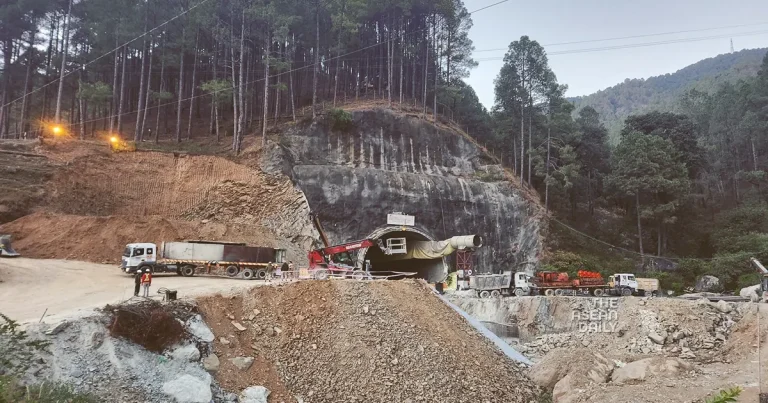25-11-2023 (NEW DELHI) In the heart of the Himalayas, a distressing situation unfolds as 41 Indian construction workers remain trapped in a collapsed tunnel, highlighting the fragility of this awe-inspiring region. While rescue efforts are underway, the incident prompts a crucial examination of India’s approach to development projects in the high Himalayas.
Tiny underground camera has provided the first video of dozens of #Indian tunnel workers who’ve been trapped for the past10days in Uttarakhand.Rescuers are preparing to dig a entirely new shaft to get them out #พรุ่งนี้มีลางสังหรณ์ #bbcqt #Ireland #HappyThanksgiving #BlackFriday pic.twitter.com/DBC1Jvplxh
— Areeba Mazhar (@AreebaMazhar07) November 24, 2023
The cause of the tunnel collapse remains uncertain, be it a landslide or undue stress on the mountain’s structural integrity. What is clear, however, is the intricate challenge of extracting the trapped workers without triggering further calamities. This raises a pressing question: Are large-scale development projects in this delicate terrain being executed with the necessary caution?
India’s recent acceleration of work in the Himalayan region stems from a convergence of factors – national security concerns, political populism, and the imperative to transition to cleaner energy sources. The ambitious plan to construct a 900km network of motorways, connecting revered mountain temples over 3,000m above sea level, is emblematic of this push. While these shrines have long been pilgrimage destinations, their inaccessibility added to their mystique. However, Prime Minister Narendra Modi’s vision aims to make them accessible year-round, blending religious symbolism with massive development undertakings.
Beyond populism, the geopolitical context adds another layer to India’s motivations. The disputed border with China, a constant source of tension, has prompted India to bolster infrastructure in the region. The Supreme Court’s intervention in reducing the width of new mountain roads saw the defense ministry insisting on a minimum width, ostensibly to facilitate troop and armor movements to the border. China’s advantage lies in the relatively smoother terrain on its side, enabling more efficient road and rail construction.
Additionally, the imperative to diversify energy sources has led to the expansion of hydroelectric projects in the Himalayas, particularly in the northeast. India’s renewed focus on hydropower is essential in combating climate change, but it comes with its own set of challenges. The warming weather and increased frequency of storms exacerbate the risks. Flash floods, eroding earth and tree cover, make the treeless slopes susceptible to devastating landslides.
Recent events, such as the shutdown of a major hydroelectric project due to landslides and the washout of a dam near the Bhutan border, underscore the complexity of executing projects in this region. Each occurrence escalates the cost of capital for new ventures and makes financial closure more elusive.
Policymakers are now at a crossroads. While development in the Himalayas is essential, a reassessment of the scale, planning, and execution of these projects is imperative. The unique ecosystem of the Himalayas is at risk of irreparable damage, and the frequency of such incidents poses a substantial threat to life. The call is for a more cautious, meticulous approach to building in the Himalayas, striking a delicate balance between progress and preservation.




